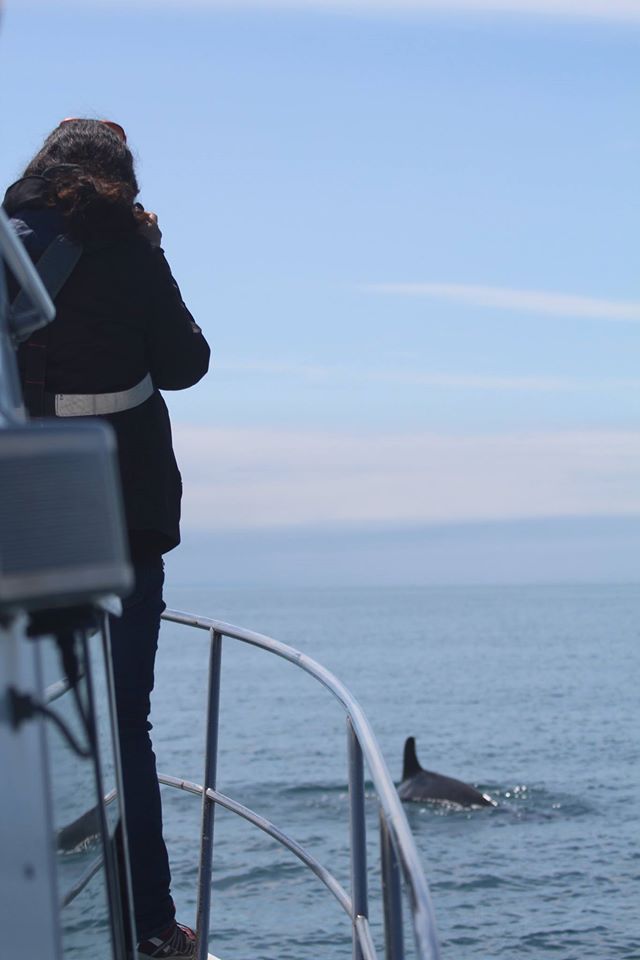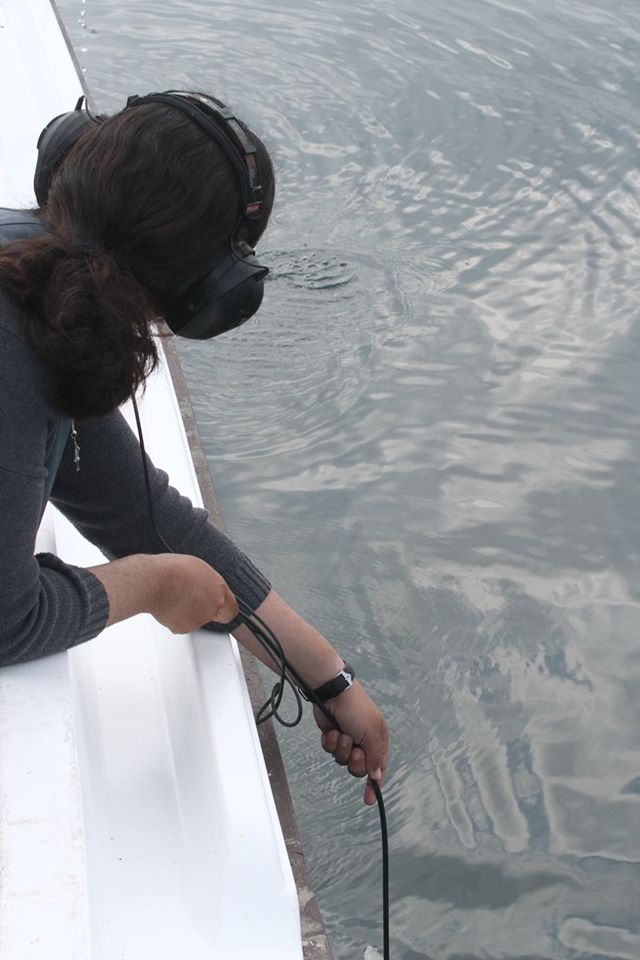Every year at Sea Watch, we recruit a group of interns, including an Education and Outreach Assistant and a Research Assistant/Intern Coordinator. Our hardworking interns are indispensable for the work that we do and meeting and getting to know them all at the start of every period is a very rewarding part of our job. The most crucial pick for me as Monitoring Officer is probably the Research Assistant. The RA is my right hand and assists me with every little or large task throughout the season; they oversee and train the interns, plan rotas and help us to keep things running smoothly during field work and in the office. It’s a very challenging role but also very rewarding and a great opportunity to learn new skills. I know this from my own experience as I started out as an RA in 2011 myself! We have been very lucky and have had many amazing people join us in this position since then, do you think you could be the next one? If you do, read on and find out what Sonia, our 2016 RA has to say on the role!
I can’t believe it’s been a year since I applied for the Research Assistant position with Sea Watch… And, honestly, it was one of my best decisions ever. I thought I didn’t have any hope on getting the job, because although I did have loads of experience coordinating interns, my experience with cetaceans was pretty basic (and a lot of it to do with acoustics)… but I got it!! I couldn’t have been happier!!
I’ve always wanted to be a marine biologist and work in conservation, but until my Masters internship I only worked with sea turtle conservation projects. It’s something that I love, don’t get me wrong, but I wouldn’t be a good conservationist without having the bigger picture, and you cannot having working with one species only. So during my Masters internship I worked on bioacoustics, looking for fin whale song and I knew I had to get to the field to work with cetaceans. I just fell in love and needed to know more about them. On my previous job, a lot of the volunteers came from the UK, so I knew about Sea Watch before applying. They don’t only collect vital data on cetacean conservation but give equal importance to public awareness and promote citizen science. This is what I found most attractive about Sea Watch, so when I saw the job advertisement I applied and hoped for the best.
And the best happened! New Quay is a lovely little town, with marine wildlife everywhere. You can even spot dolphins from the office window, you can’t ask for more, really. When Kathy and Katrin first told me about about the daily landbased watches from 9AM to 9PM throughout the summer, I was dubious; I thought we might at best see a couple of animals a week- with binoculars. Well, let’s just say that sometimes I had to take a few steps back to be able to use the zoom lens to photograph them. And I still remember my first thought when I saw my first Welsh dolphin. Oh God they are BIG. They are like double the size from the Mediterranean ones I was used to. Absolutely massive!!!
Porpoises are a bit rarer and can be quite a challenge to spot them but we saw them fairly regulary and during one of our last surveys we had 27 of them!
There’s also loads of birds around, I love diving birds so for me it was paradise! So many razorbills and guillemots! When the colony leaves at the end of the breeding season, it’s a bit sad and you do miss seeing them everywhere, but that means its baby seal time, so not all bad!
And, last but not least, TURTLES! I am a turtle girl, so imagine when I saw a leatherback, my first leatherback ever, during a survey… I was so shocked that I couldn’t speak, so it wasn’t until she was gone that I told the Monitoring Officer, making me the only one that saw it (really sorry guys!).
About the job, be ready for some ninja multitasking times. You will be helping with photo-id, data checking, sightings database, intern training, rota,…a lot of very different things. You need to be very organized but it’s worth it!
The best part of the job was going on surveys, obviously. Spending the entire day looking for dolphins can be very frustrating if you don’t find them, but when you do… it is one of the best things ever! You’ll be helping with the photo-id, both taking pictures of fins and matching them to the catalogue, and that’s a lot of fun. You also get to know the dolphins pretty well, and being able to recognize them as soon as I saw them was one of my favourite things. Visitors also likes to know their names, it helps with public awareness, so it is always useful to learn them!
I also had the chance to keep being a bioacoustics nerd and work with Sea Watch’s two hydrophones, playing with the acoustic data and extracting whistles and clicks, that was pretty cool.
The worst part was making the rota. There will be always someone that won’t be happy about it, and you’ll have a lot of last minute changes that will mess with it. So don’t do it on a Sunday for the next week, try and do it on a Thursday so you have three days to change it! (I think my record is having 7 versions of the same rota…). Living together with everyone can be challenging, because it can be difficult separate office time from time off but it can also be lots of fun -with board game and Singstar nights!
And, of course, there’s the challenge of learning the difference between a seal head and a buoy from adistance. That can be pretty tough too.
It is easy to get a part time job, so if you need some extra money to cover your needs, you can work a few hours in a local pub. I did, and had no problems with my Sea Watch schedule.
If you want to sharpen those marine conservation skills of yours, while working with beautiful animals, in a beautiful place with amazing people, apply. You won’t regret it! Check out the role description and other opportunitites here




































